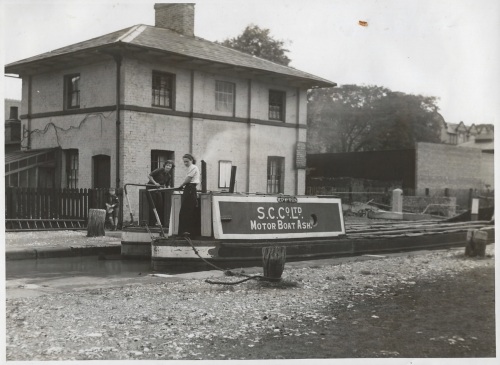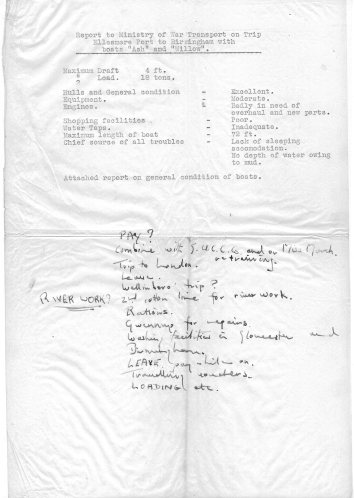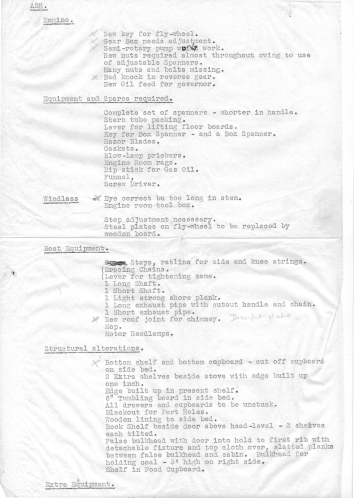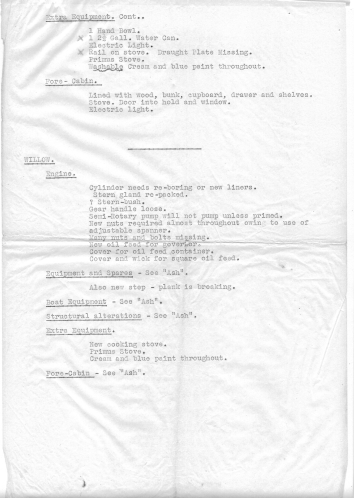Our old boat, Lucky Duck was always something of a mystery. The builder was listed as Unknown in all the documentation we had for the boat, and we didn’t know anything about the history of the boat prior to 2004 when it was bought in a neglected state by John, from whom we bought it in 2008. Various respected and knowledgeable people of the boating world had looked at it and scratched their heads. But now the mystery is solved!

Last week, I was contacted by Esther W, who had done a bit of detective work, searching for Elaine or Marie Louise, the boat which her father rebuilt in the 1980s, and which she had many happy memories of boating on throughout her childhood. A magnifying glass had revealed the BW index number on an old photo, and from there she’d been able to look up the most recent name of the boat. This led her to coming across our old blog, and to getting in touch with us to see if we knew its current location. As it’s moored two boats down from us on the Common we were able to meet them there last week (the current owners were both at work).
She has now sent me some photos from the 80s and asked her dad for more information about the boat and its history, which they are happy for me to reproduce here, to tell the Duck’s story.
Elaine was built in 1980 at Brierley Hill, on the Dudley No.1 canal (possibly by Delph Marine). She was originally 30ft long, with a cruiser stern. Then, in 1984, Esther’s father Anthony bought her as a family holiday boat. He was an engineer who worked for a boat builder’s himself, and he wanted something a little more traditional, so he embarked upon a major remodeling of the boat. First, he replaced the foreend, giving it wide rubbing strakes (we’ve never seen a fore end quite like it), to deflect the boat if it should hit anything. This photo, taken in Chester, shows the boat part way through the transformation, with the original stern but a new bow.

He also added the curved front doors, reclaimed from a house. The boat had no canopy in those days so the doors were on show all the time. By far the biggest job however was the addition of a new stern. Anthony extended the cabin to give it a traditional stern, and put a lid over the whole boat, with rounded corners above the bow doors. He added portholes and the side hatch

Painted a beautiful dark green and with all the brasses shiny (that was one of Esther’s jobs as a girl), the boat was admired all around the canals. They took it on many holidays and maintained it immaculately. Here are a few shots from family holidays:








Their family kept it at Calf Heath and owned it until 1990 when it was sold on, and they lost track of it.
We are indebted to Esther for getting in touch and sharing the story of her family and the boat we know as Lucky Duck. It certainly is a one off -a very different and special boat, and it continues to bring joy (and adventure) to people thirty four years on. We had a brilliant five years living on it despite all our misadventures, and we’re happy that it’s still in Cambridge being lived on, and having been given a new lease of life by the new owners. As it’s such a distinctive boat, I wonder if we’ll bale able to piece together what happened to it between 1990 and 2004?









































Recent Comments